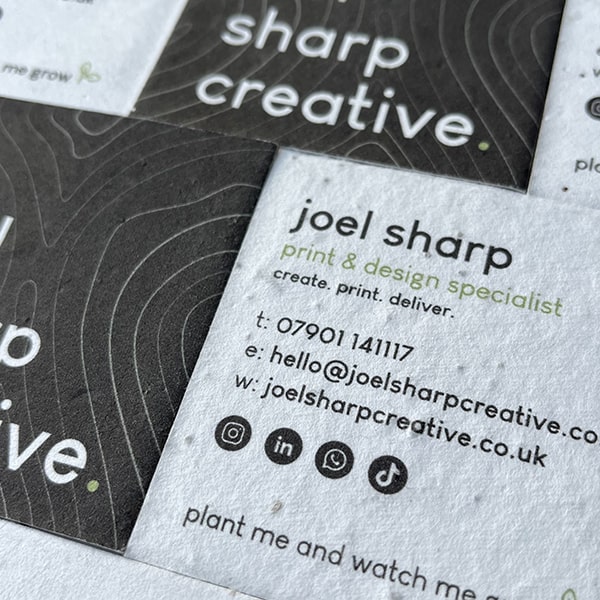Sustainability is a hot topic this year, businesses are becoming more aware of their environmental impact and want to make better choices. Print is often frowned upon, by being bad for the environment with the use of paper. But what people don’t realise is that print doesn’t have to be completely dismissed from marketing and business.
I see many businesses using the term ‘paper free’ or ‘e-communication is better’ .This is something that comes from little knowledge on the use of paper. One of the most common myths is that using paper is bad for the environment, when it’s actually one of the most recycled materials in the world and comes from sustainable natural sources.
Businesses that use the term ‘paper-free’ or ‘go-green’ give an impression that digital is better for the environment than using paper. If you actually break down the lifetime of both of those, you begin to realise that it’s not always the case. Paper is a renewable and sustainable product made from wood which is harvested from sustainable European forests.
Because more businesses and individuals are using digital and e-communication instead, this means that data has to be stored somewhere, usually using a cloud service. The ‘cloud’ is not that thing up in the sky, they’re actually colossal data centres. These centres hold machinery and servers that are commonly made using finite raw materials which are precious and non-renewable.
As well as being incredibly difficult to recycle, these data centres produced 53.6million metric tonnes of e-waste in 2019. Just to put that into perspective that’s around the weight of 150 Empire Estate buildings.
Call me biased but I think print marketing is one of the best ways to make an impression is to have something in your hands to touch and actually feel, this is called haptic communication. Triggering the senses is more likely to secure trust and a potential sale, rather than looking at something on a digital screen.


So, how can you make your print marketing more sustainable?
- Explore the fun range of materials that are on offer; something like plantable seeded paper which grows into wild flowers attracting bees and wildlife into your garden. Not only is this great for the environment being biodegradable, but it gives a second use to your print and is also fully compostable. Seeded paper can be used for lots of different print formats, such as business cards, flyers and postcards.
- Use 100% recycled paper, this is made from PCW (post-consumer waste), paper from our bins. It’s a great cost-effective option, but importantly allows you to let your customers know that you are eco-conscious and you want to make a difference. As this is a plain white sheet, it’s a great option for business stationery, flyers and leaflets.
- Scrap those roller banners, they aren’t recyclable and never last very long. Make the switch to my new product. The ‘eco-board’, a strong material that is made out of recycled cardboard boxes. We use print using vegan ink on these boards, again something else that can be used on your marketing to show your customers you’re making better choices.
- It’s very rare that you see signage that is non-recyclable, but there are so many options on offer that are fully recyclable. One particular material which I like to use for a Correx replacement is Triaprint, it’s a PVC free plastic material that I like to call ‘for sale sign’ board. This is a great alternative which can now be put in the recycling bin.
- Eco-friendly merchandise, for things like pens, cups and key rings, use recycled plastics or make sure that everything is recyclable. And then clothing and bags, use organic cottons.
Businesses quickly jump to the idea of being paper free because they think it’s the right thing to do, understandably it sounds like the best thing for the environment. But businesses just aren’t aware of what eco-friendly print is on offer.
I agree with being more conscious with print to an extent, for example no need to be printing every email. I think it’s just about being a bit more careful of what you choose to get printed therefore being more sustainable.
If you’re interested in seeing how you can make the switch to eco-friendly print then please don’t hesitate to book in for a chat today.




